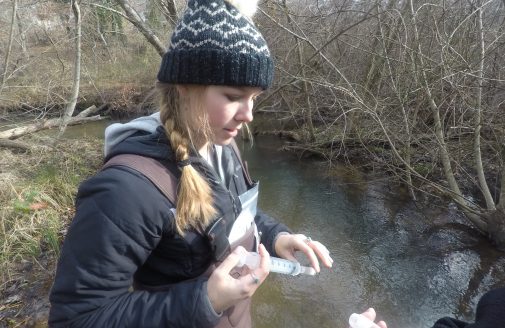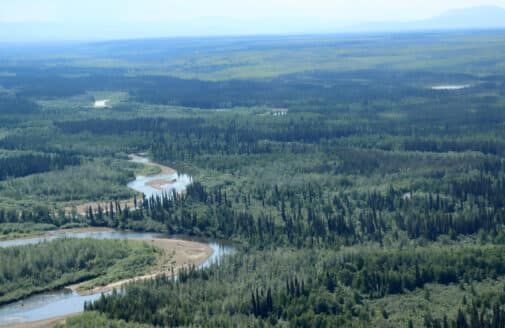Helping wetlands survive climate change
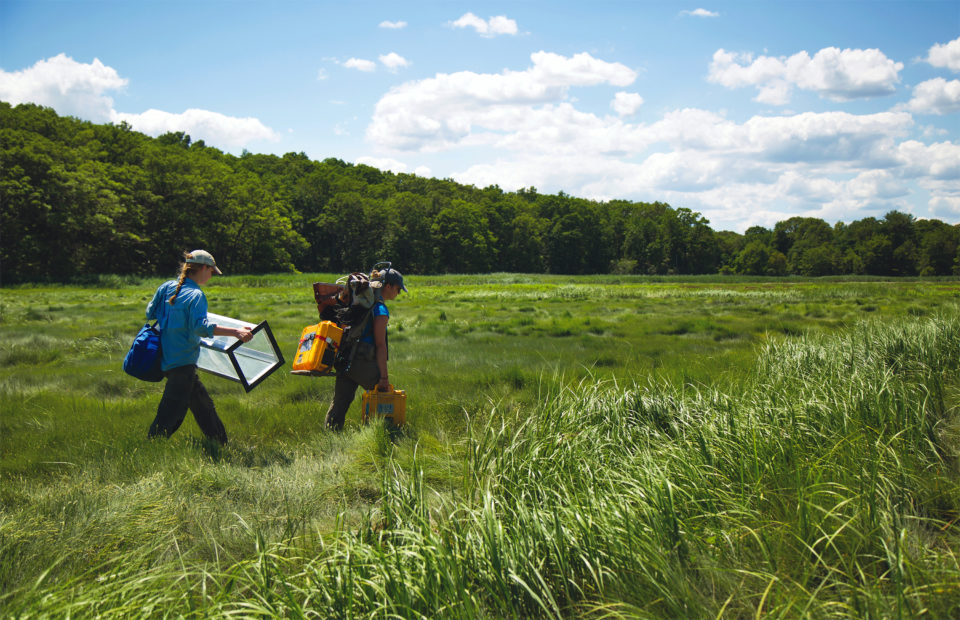
Coastal wetlands are a key part of our climate picture, slowing storm surges, absorbing carbon, and providing habitat for birds, fish, and other wildlife. Woodwell Climate Research Center scientists have spent nearly two decades studying how to protect our wetlands from nutrient runoff.
A key study is centered in the Great Marsh region north of Boston, part of The TIDE Project, a collaboration launched in 2002, and supported by the National Science Foundation. The urgency of understanding salt marsh recovery along the Mid-Atlantic coast became heightened in the wake of massive losses from 2012’s superstorm Sandy.
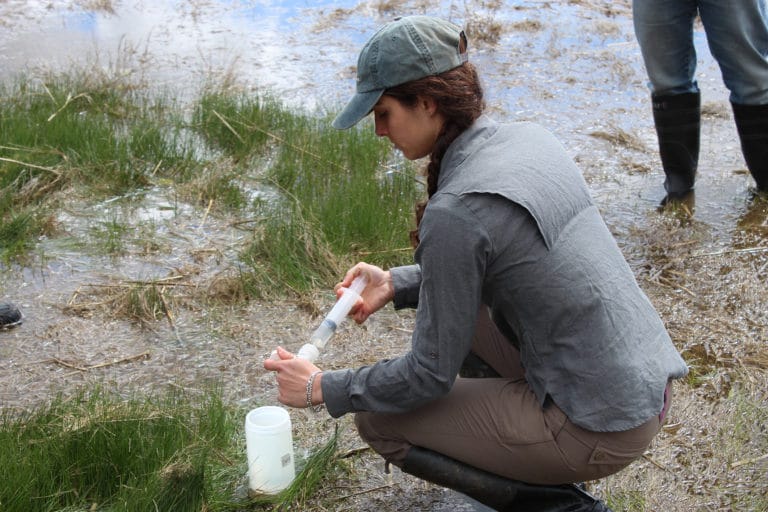
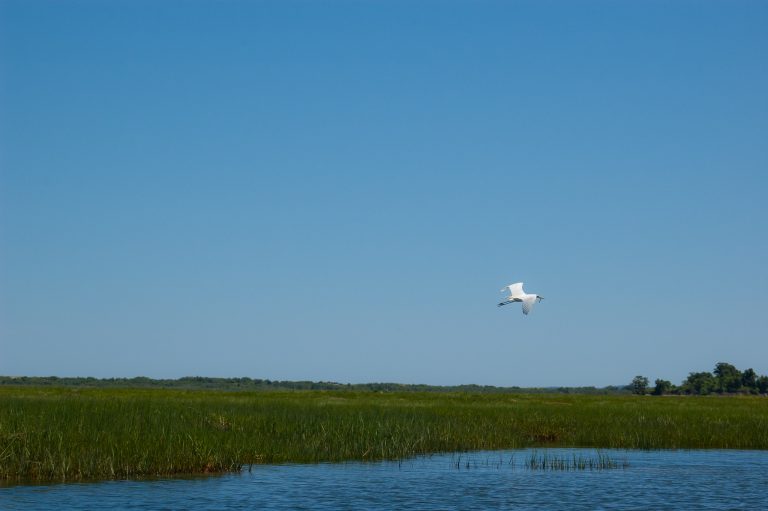
Woodwell researcher Hillary Sullivan collects water samples in Great Marsh
Nitrogen runoff from lawn fertilizer, septic tanks and burning fossil fuels has harmed marshes just when we need them most, as global warming raises sea levels, strengthens incoming storms, and disrupts coastal ecosystems. Coastal wetlands serve as a speed bump for incoming storms and as nurseries for the tiny fish that form the base of the marine food chain. Marshes can also absorb and store carbon pollution, but right now scientists don’t have a strong understanding of how nitrogen pollution has harmed their carbon storage capability.
“For about a century, we’ve been polluting marshes with excess nutrients. As federal, state and local governments now work to cut that pollution, our study will examine if ecosystems reach a point of no return, or if they can make a comeback,” Woodwell scientist Linda Deegan said. “This work will be important in learning how to restore marshes, and what factors allow them to survive climate change-driven rising seas.”
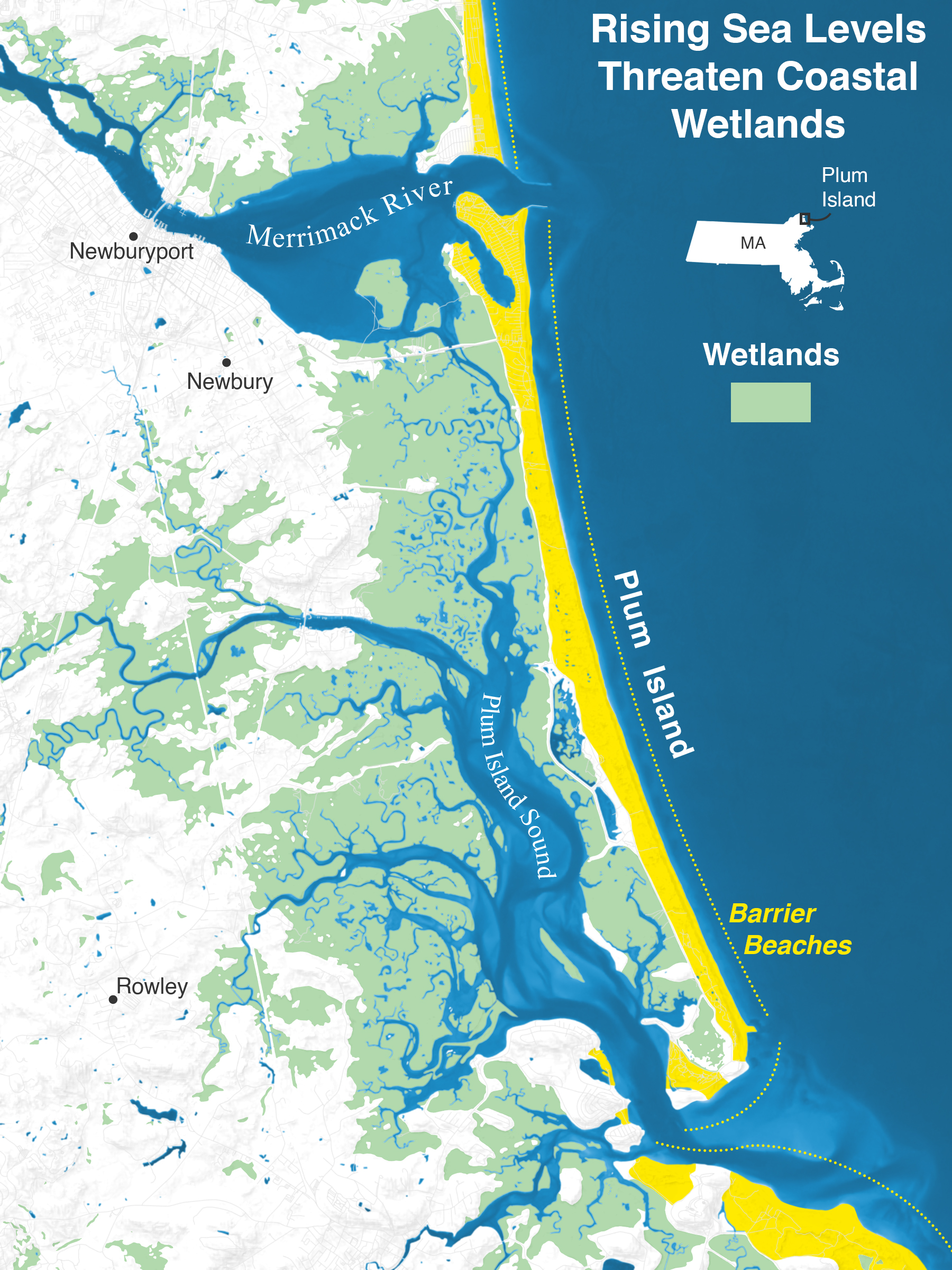
Launched in 2002, the TIDE Project introduced large quantities of fertilizer to several marsh areas in order to understand the effects of and natural recovery from large-scale nutrient pollution. It’s a collaboration with Plum Island Estuary Long Term Ecological Research funded by the National Science Foundation and managed by Dr. Anne Giblin at the Marine Biological Laboratory.
“Previous studies looked at already-degraded marshes, or covered the surface of a marsh with fertilizer. But we felt strongly that it was important to go a step further, to understand how a marsh reacts to nutrient pollution delivered in tidal waters as it would be in a polluted estuary,” said Woodwell researcher Hillary Sullivan, a biogeochemist who did her master’s thesis on the TIDE Project and is in her sixth year working on it.
Doctoral student assistant Justin Lesser & Woodwell researcher Hillary Sullivan
The researchers spent years adding fertilizer to the marsh, and are now monitoring the marshes’ progress toward recovery, including the full growing season response of soil, microbes, plants, and animals.
Great Marsh teems with life, with great egrets hunting for small fish along the shoreline and osprey soaring over deeper waters. Sullivan and Justin Lesser, a doctoral student assistant, use low, wide nets called flume nets used to check the populations of fish and other marsh residents. They also take water samples and push them through filters that screen out tiny organisms, stabilizing the sample until it can be tested at Woodwell’s laboratory in Falmouth
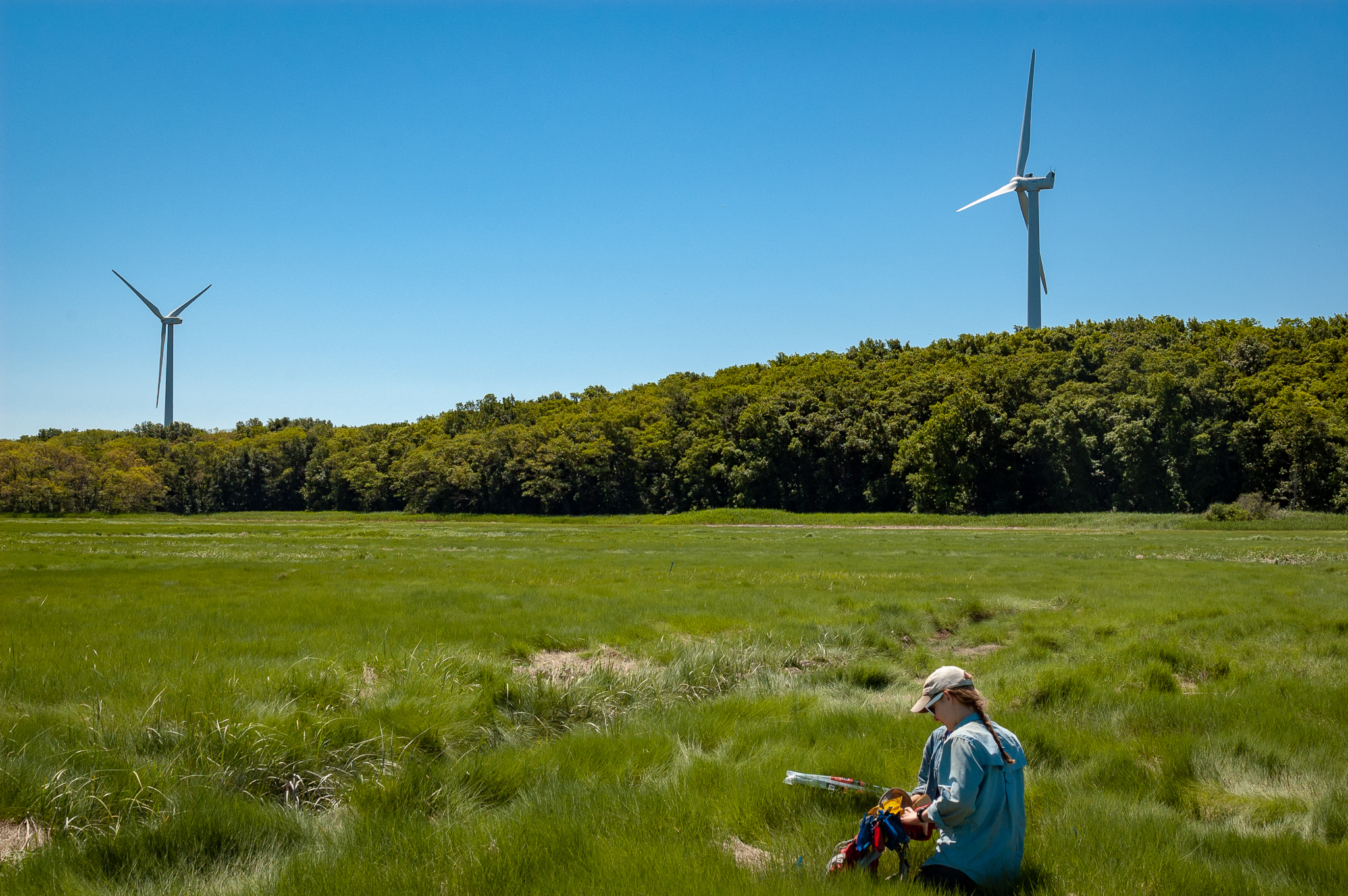
Researcher Sophie Drew
“We know that the marsh can take up some nutrients, but we want to know when it’s too much—where we overload the system,” Sullivan said. Initially, the marsh looks superficially healthy as excess fertilizer leads to rapid growth. But as the grass puts more energy into leaf growth, it puts less effort into extending its roots, leaving the plants vulnerable to falling over. The nitrogen also leads to changes in marsh microbes and algae, and marsh edges can be seen collapsing.
Woodwell researchers have seen a decline in the polluted sites in the abundance of a small minnow called the mummichog, which travels into the marsh to feed and reproduce, and then become an important food source for both seabirds and the larger fish that local fishermen depend on.
Our ultimate goal is to reach policymakers and people who have the power to limit nitrogen that goes to marshes.Hillary Sullivan
“This was the first large scale nutrient enrichment experiment of its kind, and the first large scale recovery of its kind,” Sullivan said. “Nutrient pollution shows how human activity creates a footprint on this really important ecosystem. We want to learn how we can mitigate these actions that are impairing something we rely on.”
“Our ultimate goal is to reach policymakers and people who have the power to limit nitrogen that goes to marshes. These marshes also need more funding for marsh restoration, but we need to understand how the legacy of decades of pollution might affect restoration efforts.”
Latest in Water
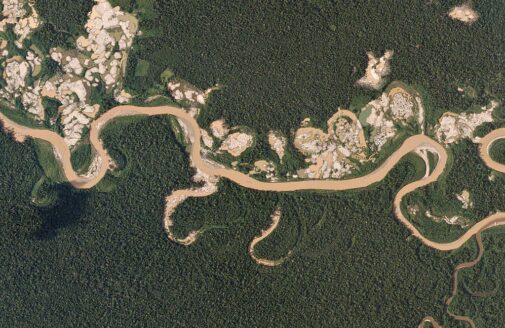
- In The News
Gold mining causes long-lasting damage in the Amazon rainforest
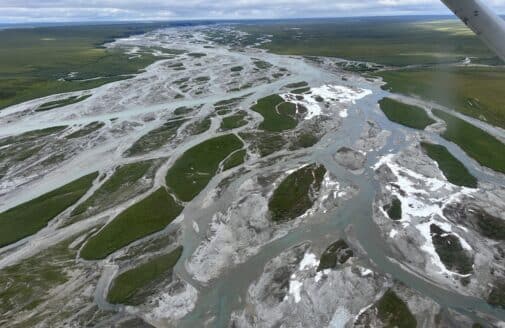
- In The News




